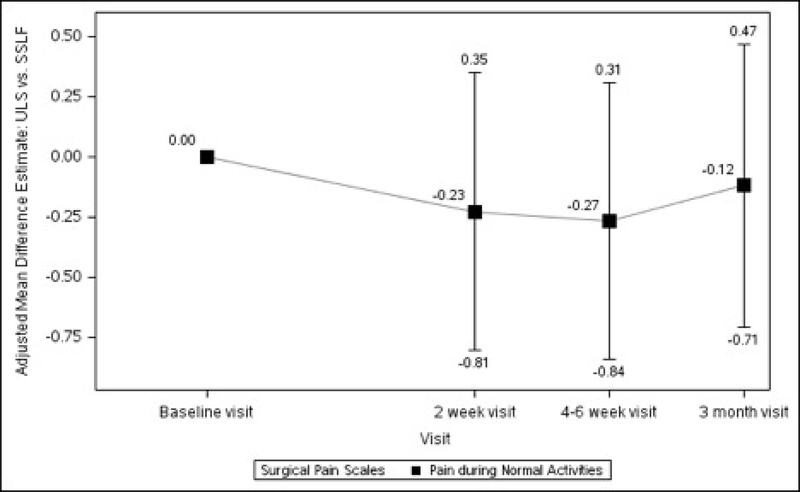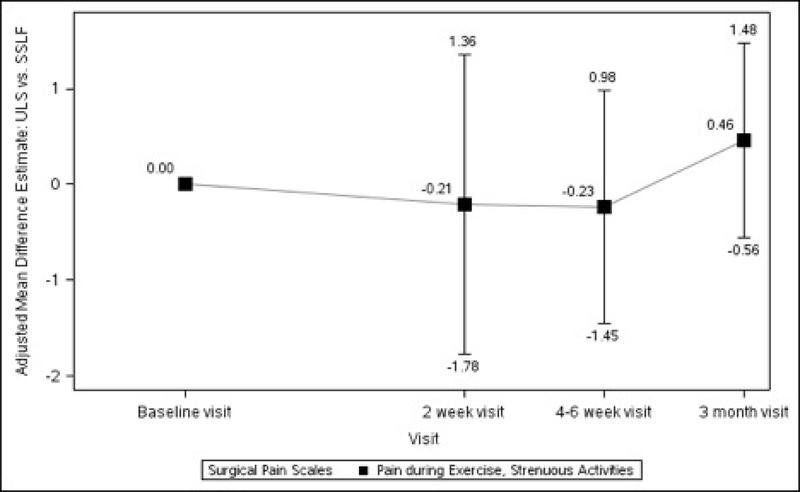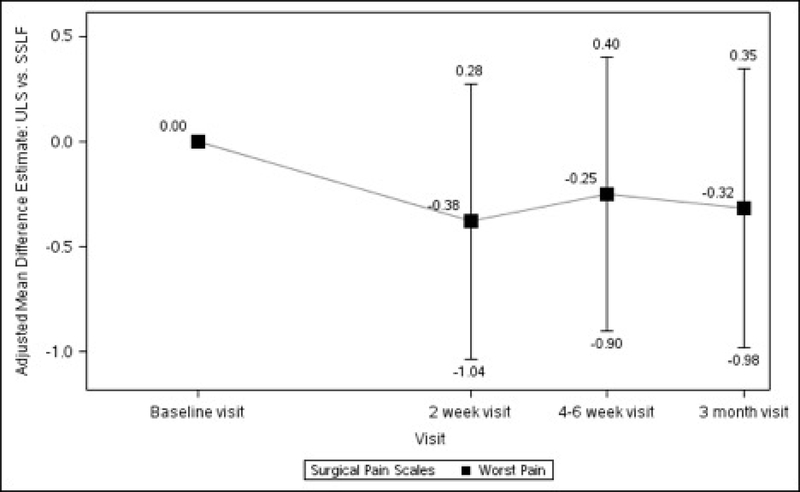Figures 2A–2D. Difference in Surgical Pain Scale scores between surgical interventions, from Baseline to 3 Months After Surgery, Modeling Outcome as Change from Baseline1.
Figure 2A. Pain at Rest Difference between Surgical Interventions across Visits
Figure 2B. Pain during Normal Activities Difference between Surgical Interventions across Visits
Figure 2C. Pain during Exercise, Strenuous Activities Difference between Surgical Interventions across Visits
Figure 2D. Worst Pain Difference between Surgical Interventions across Visits
1The analyses for each outcome of interest were performed on the modified intent to treat population (mITT) which includes all participants that were eligible, gave consent, were randomized to both the PMT and surgical interventions, and for whom the outcome was assessed (i.e. non-missing). For analyses assessing each outcome’s change from baseline to a follow-up visit, all adjusted means, mean differences, standard errors, 95% confidence intervals, and p-values for outcomes were obtained from general linear models adjusting for randomized surgical intervention, randomized PMT intervention, visit, interaction between visit and randomized surgical intervention, interaction between visit and randomized PMT intervention, and three-way interaction between visit and randomized surgical intervention and randomized PMT intervention, concomitant hysterectomy, age at surgical randomization, race (white, black, other), ethnicity, public insurance, and private insurance while controlling for a random surgeon effect (if found statistically significant) and repeated subject visits. All tests were conducted at a significance level of 0.05.




